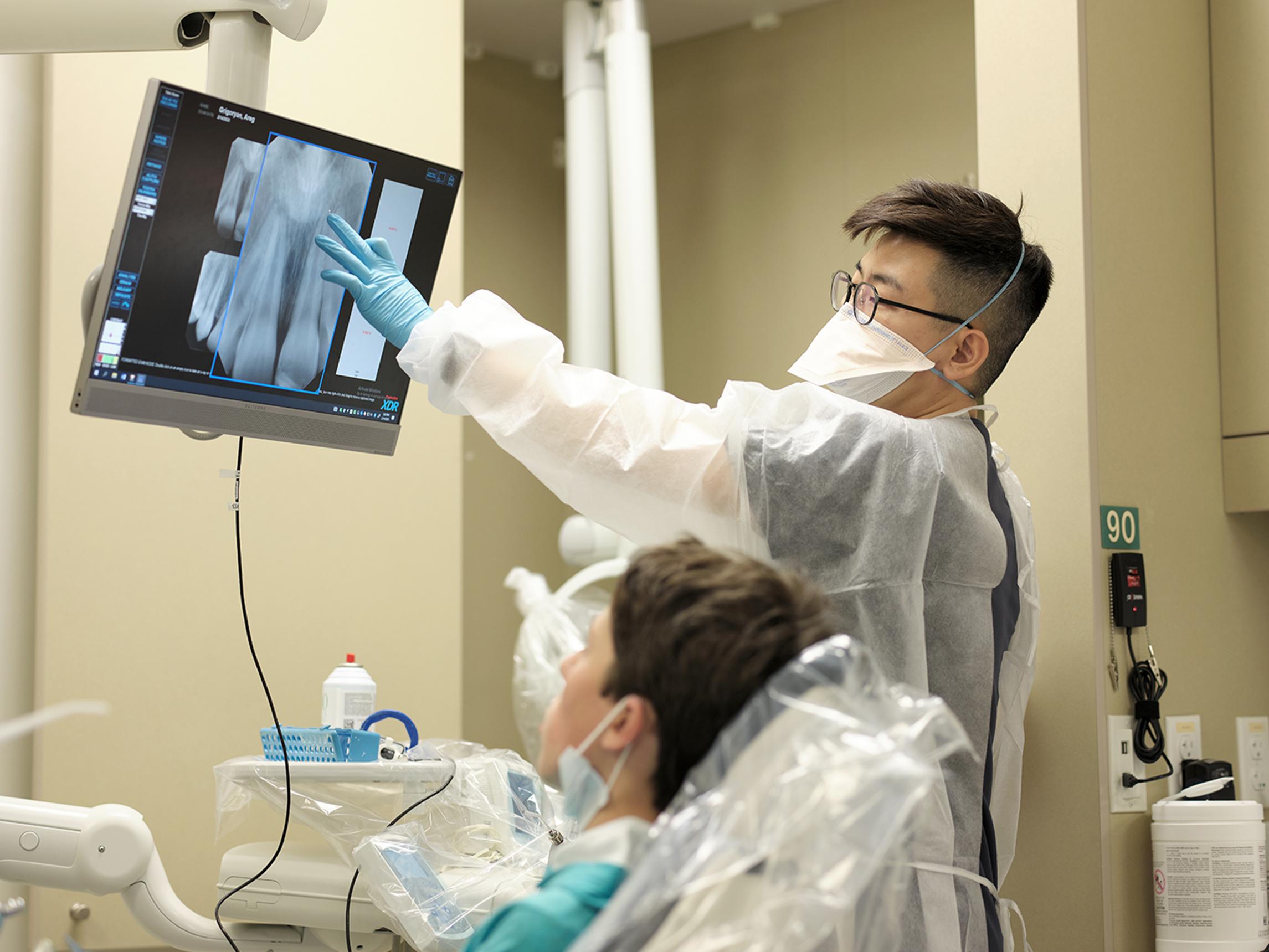Specialist Tips for Picking the Right Dentists Eugene for Your Dental Health and wellness
Specialist Tips for Picking the Right Dentists Eugene for Your Dental Health and wellness
Blog Article
Explore the Series Of Dental Issues Dentists Typically Take Care Of
From the prevalent issue of tooth cavities caused by bacterial activity to the more perilous progression of gum tissue disease, dental specialists need to be skilled at early discovery and intervention. Tooth sensitivity, often resulting from worn enamel, adds another layer of complexity, while the very early identification of dental cancer cells can be life-saving.
Dental Caries and Dental Cavity
Tooth cavities, additionally understood as dental cavities, are created by the demineralization of tooth enamel due to acid-producing microorganisms in the mouth. If left neglected, tooth cavities can lead to substantial oral issues, consisting of infections and tooth loss.
To identify cavities and tooth decay, dentists utilize a mix of aesthetic examinations, dental X-rays, and occasionally laser fluorescence devices. For more innovative degeneration, a dental professional might need to eliminate the endangered cells and restore the tooth with fillings made from materials such as composite material, amalgam, or porcelain.
Preventative measures are vital in combating tooth cavities and dental caries. Routine oral check-ups, proper brushing and flossing methods, and a well balanced diet regimen low in sweet foods and drinks are basic methods that support oral health and minimize the threat of cavities.
Periodontal Illness

Periodontitis occurs when plaque, a sticky movie of germs, solidifies into tartar and builds up listed below the periodontal line. This causes the periodontals to draw away from the teeth, producing pockets that come to be infected. As the body's body immune system combats the germs, the bone and connective cells that hold teeth in area are broken down. The danger factors for periodontal illness include bad oral health, cigarette smoking, diabetes mellitus, and hereditary predisposition.
Dentists diagnose gum disease with clinical assessment and periodontal probing to determine pocket midsts around the teeth. Treatment might entail scaling and root planing to get rid of tartar and germs from tooth surface areas and beneath the gums.

Tooth Sensitivity
Beyond gum condition, an additional usual dental issue that people often come across is tooth sensitivity. Identified by a sharp, transient pain in response to stimuli such as hot, chilly, sweet, or acidic foods and beverages, tooth level of sensitivity can significantly impact a patient's high quality of life.
Several variables contribute to the development of tooth sensitivity. Aggressive cleaning, making use of unpleasant tooth paste, and the usage of acidic foods and drinks can deteriorate enamel. Additionally, oral procedures, cracked teeth, and periodontal condition can subject the dentin. To mitigate tooth level of sensitivity, dental practitioners might recommend using tooth paste formulated for sensitive teeth, fluoride treatments to reinforce enamel, or dental bonding to cover revealed dentin. In severe situations, even more sophisticated treatments such as periodontal grafts or origin canals may be essential.
Inevitably, addressing tooth level of sensitivity calls for a thorough method that consists of both safety nets and targeted therapies to ease pain and shield the dental frameworks.
Oral Cancer Cells
Dental cancer cells, a serious and potentially serious problem, commonly flies under the radar in routine dental care discussions. This sort of cancer cells can affect any part of the mouth, including the lips, tongue, cheeks, flooring of the mouth, tough and soft palates, sinuses, and throat. Early detection is crucial for successful treatment, yet lots of instances are identified at innovative phases as a result of subtle preliminary signs.
Misaligned Bites
Misaligned bites, More hints additionally referred to as malocclusions, are an usual dental issue that can dramatically affect both oral health and wellness and overall lifestyle - dentist in eugene oregon. These problems take place when the upper and lower teeth do not line up correctly, bring about troubles in attacking, eating, and also talking. Malocclusions can be identified right into numerous types, consisting of overbites, underbites, crossbites, and open bites, each offering one-of-a-kind obstacles that need customized therapy approaches
The reasons for misaligned attacks are diverse and can consist of genetic aspects, very early loss of key teeth, thumb sucking, and injuries to the jaw. Signs and symptoms usually consist of discomfort or discomfort in the jaw, regular attacking of the internal cheeks, and a boosted threat of dental cavity and periodontal condition due to problem in preserving dental health.
Dental experts and orthodontists employ a variety of interventions to attend to misaligned bites, from typical dental braces and clear aligners to a lot more advanced operations in serious situations. Early medical diagnosis and therapy are vital to avoid complications such as temporomandibular joint (TMJ) disorders and uncommon wear on teeth. Via thorough examination and tailored treatment plans, dental experts play a critical function in remedying malocclusions and improving patients' dental function and aesthetic appeals.
Final Thought
Tooth cavities and tooth degeneration result from bacterial activity that here endangers tooth enamel, while gum tissue disease can escalate from gingivitis to severe gum conditions. Tooth sensitivity includes discomfort from thermal stimulations, necessitating details treatment.
To identify tooth cavities and tooth decay, dental practitioners use a mix of visual exams, dental X-rays, and often laser fluorescence tools.Beyond periodontal disease, one more typical dental problem that people frequently experience is tooth sensitivity. Furthermore, oral procedures, broken teeth, and periodontal disease can expose the dentin. To mitigate tooth sensitivity, dental professionals may recommend making use of toothpaste developed for delicate teeth, fluoride treatments to strengthen enamel, or oral bonding to cover exposed dentin. Dental caries and tooth decay result from microbial task that compromises tooth enamel, while gum tissue illness can rise from gingivitis to extreme periodontal problems.
Report this page